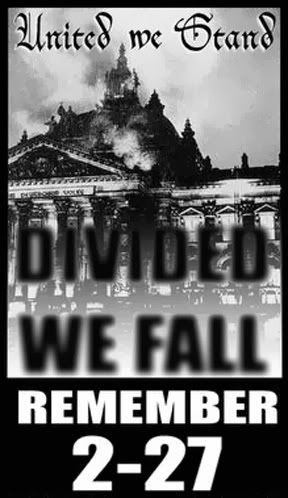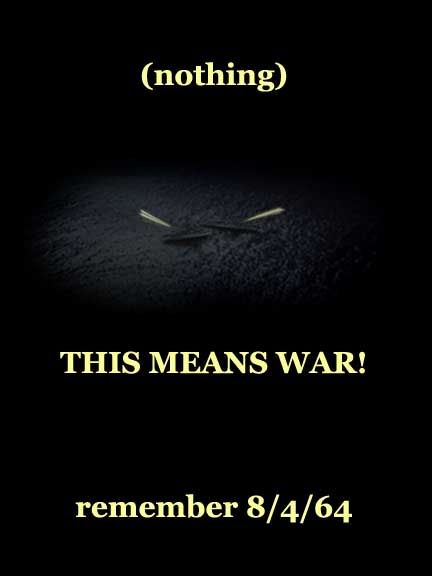The 12/7-9/11 Treadmill and Beyond
March 25 2009
Last update 4/2
WINDOW DRESSING
As outlined in a previous post, as of mid-1940, a “strong attitude” towards Japan was thought in Washington a useful means to deter further Asian or Pacific adventures. As also discussed there, Adm J.O. Richardson, Commander-in-Chief US Fleet (CinCUS), had been told that the Navy was to act out this attitude, and that the Pacific Fleet’s retention at Hawaii was part of this bit of theater. But being on the stage rather than behind it gives him more credibility, and this clout was staked on his finding this deterrent policy wrong-headed should have caused second thoughts in the Capitol. It apparently did not.
The posture of keeping the Fleet much nearer Japan was perhaps first explained in a May 27 letter from Chief of Naval Operations Harold Stark to Admiral Richardson in Hawaii, who called it "one of the most direct replies to any of my letters to him, although it was far from being as definitive as I would have liked:"
“Why are you in the Hawaiian area? Answer: You are there because of the deterrent effect which it is thought your presence may have on the Japs going into the East Indies. In previous letters I have hooked this up with the Italians going into the war. The connection is that with Italy in, it is thought the Japs might feel just that much freer to take independent action.”
Whatever its possible political impact, the posture was “valueless from the hard realities of war,” in Richardson’s mind, although it was was played out with the tools and personnel of war. In his 1958 memoirs he lamented that this “window dressing” was “assigned great weight” by the brains In Washuington [2], and labored to explain why it was wrong, starting with this banal observation:
“In my discussions in Washington, both within the Navy department and within the White House, it was constantly asserted that the presence of the fleet in Hawaiian waters was exerting a restraining influence on the Japanese. […] the statement might have had a factual basis […but...] it has always seemed odd to me that such an affirmative statement had not been made in the intervening years by some Japanese military officer occupying an important position in the Japanese governmental structure during this period.” [3]
The interpretation offered in an obscure Army history work on coalition warfare seems to offer two clues:
“The US Fleet […] received orders to remain at Pearl Harbor […] with the purpose of dissuading the Japanese Government from moving southward […] The War Department staff believed that a show of strength in the Pacific might be taken by the Japanese Government as an occasion to open hostilities. On this ground the Army planners strongly objected to leaving the Pacific Fleet at Pearl Harbor. […] The retention of the fleet in the Pacific might cause Japanese leaders to review and revise their plans, but it would act as a deterrent “only as long as other manifestations of government policy do not let it appear that the location of the fleet is only a bluff.” [4 – emph mine]
Richardson cited at least one example that’s exactly what was being allowed to appear - a mid-1940 Navy decision to recall all possible aviators from Pearl for further training in Florida. This left the islands and the fleet with even weaker aviation abilities, and it was done in the open. “Since this information […] was bound to become known to Japanese intelligence activities,” he surmised, “it was a sure giveaway to the Japanese that the U.S. governmental positioning of the fleet in Hawaii was one of bluff, and not of early combative action.” [5 – emph mine]
Stationed on a lonely string of rocky blisters on the vast surface of the Pacific, Richardson was more aware of the challenges - and threats – inherent in their position and predisposition. That the President and his cabinet truly just didn’t understand how to bluff correctly seems a stretch, and the CinCUS’ early protests are a vital clue that the deterrent agenda was likely never the motive at all. In summary, as Admiral Richardson told the Congressional investigation in November 1945:
"I stated that in my opinion the presence of the fleet in Hawaii might influence a civilian political government, but that Japan had a military government which knew that the fleet was undermanned, unprepared for war, and had no training or auxiliary ships without which it could not undertake active operations. Therefore, the presence of the Fleet in Hawaii could not exercise a restraining influence on Japanese action." [6 – emph mine]
Admittedly, this is all from one source on the purpose of the Fleet’s retention, since I only have this one cool hard-too-find original memoir book to peruse. But his opinions are invaluable, and his assessments were regarding the Fleet as he headed it, in mid-late 1940. From there on it only got less prepared with the detachments of 1941, starting with Admiral Richardson himself. He was detached from command at the end of January due in some sense or other to friction with the President, and replaced with Adm. Kimmel, to head the newly re-named Pacific Fleet, which was soon being pilfered and scattered. Edwin T. Layton, who served both commanders as intelligence chief, later offered this support to Richardson’s take on things:
“The seed of the disaster […] had been sown as Admiral Richardson had predicted the year before, when our foreign policy was allowed to dictate military strategy. This situation had resulted in a disastrous deterrent posture.”
The disaster was that any deterrence there may have been failed to hold in the face of Washington’s decision to cut off Japan’s oil flow in August 1941, and subsequent moves hastening their impulse to southern conquest to “save face,” not to mention their empire. It was at this point, Layton reckons, that the deterrent effect would be tested – the result: “Our bluff was called.” [7 - emphasis, again, is mine]
Sources: coming - lost some of my page citations













No comments:
Post a Comment